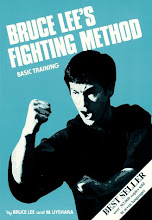Known for its effective techniques and explosive power, Baji Quan is one of the best examples of traditional Wushu (Chinese Martial Arts). It can be literally defined as the "Eight Extremes Fist" or "Fist of the Eight Diagrams." This style finds its roots in the Meng Village of Cangzhou in the Hebei province of Northern China. While mainly practiced in Northern China, there are branches that can be found in the south as well. Baji Quan is a style that has a history going back hundreds of years. Used primarily for its martial aspects, Baji was implemented in the armies for its proven effectiveness during warfare . In modern times, Baji is implemented in the training of certain branches of the Taiwan police force. Requiring many low stances, Baji Quan develops the muscles of the legs and helps to refine rooting skills. From the outward appearances Baji Quan seems to be short and to the point. Internally, it's a different story altogether. Implementing shoulder and elbow strikes are a popular part of the Baji philosophy. Coupled with explosive engery powered by proper rooting and Fa Jin, tremendous damage can be inflicted if with a single strike. Baji Quan's motions of form involve a method of stomping which effectively sends a current of energy into the Earth. With the intention of being used not only as an attack but also as defense, Baji Quan's motions are indeed effective. Some branches of Baji Quan include Wu Style Baji Quan, Kai Men (Opening Gates) Baji Quan.
Speed
Speed in fighting depends not
just on your hands and feet in swiftness..
But other attributes such as
nontelegraphic moves and awareness.
Speed in fighting is to hit
your foe without yourself being hit.
This can only be done by hours
of practice and being completely fit.
Speed in fighting is no good
without the power that goes with it.
You are here: Home > Baji > What is 八極拳?
Friday, December 29, 2006
What is 八極拳?
Labels: Baji
Subscribe to:
Post Comments (Atom)








0 comments:
Post a Comment